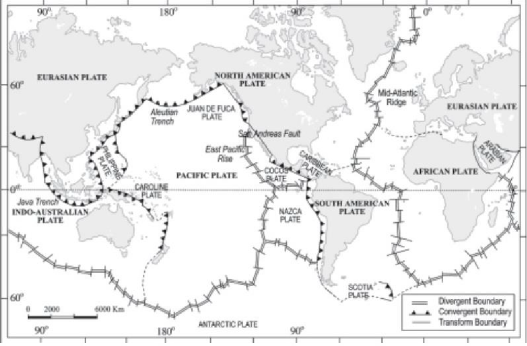4.1. Major and Minor Plates
A tectonic plate (also called lithospheric plate) is a massive, irregularly-shaped slab of solid rock. Plates are generally composed of both continental and oceanic lithosphere. This is an important difference between plate tectonics and continental drift theories. The lithosphere includes the crust and the top mantle with its thickness range varying between 5-100 km in oceanic parts and about 200 km in the continental areas. The plates are the inert aseismic regions bounded by narrow mobile belts which are characterized by Seismic and volcanic activity or by orogenic
belts. Plates’ configuration is not related to the distribution of land and water. Plates can split or get welded with adjoining plate.
The theory of plate tectonics proposes that the earth’s lithosphere is divided into seven major
and some minor plates. The major plates are as follows:
(a) Antarctic plate - Antarctica and the surrounding ocean
(b) North American plate – North America continent along with Western Atlantic floor separated from the South American plate along the Caribbean islands
(c) South American plate – South America continent along with western Atlantic floor
(d) Pacific plate – covers almost entire pacific ocean
(e) India-Australia-New Zealand plate – Australian continent along with Indian sub- continent and Indian Ocean.
(f) African plate – Africa continent along with eastern Atlantic floor
(g) Eurasian plate – Eurasia along with eastern Atlantic floor

